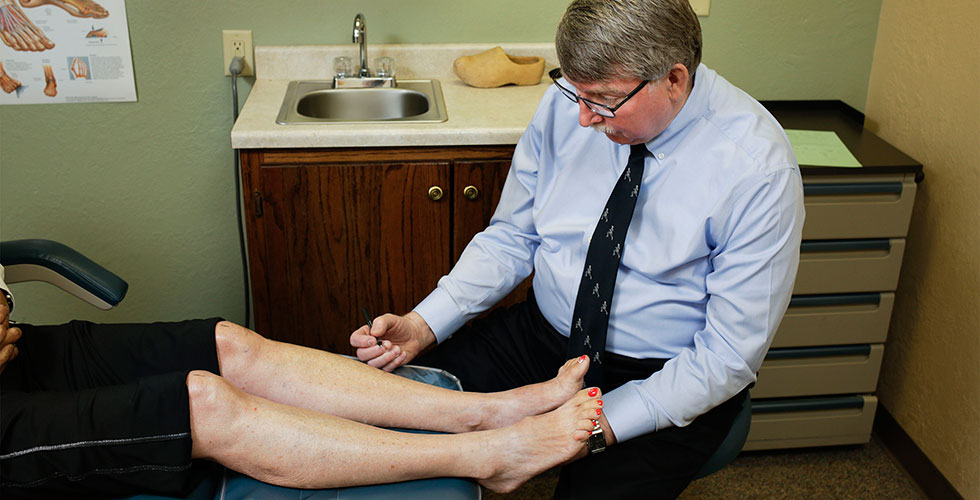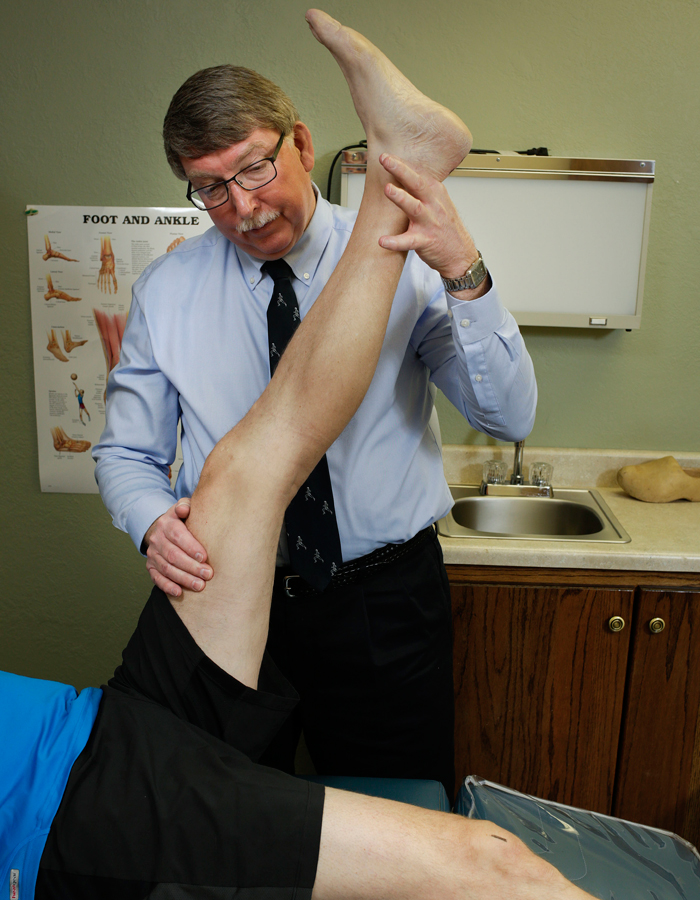Who Needs Orthotics?

I believe that one third of the population doesn’t need orthotics, one-third could benefit from their use, and one third absolutely needs orthotics.”
– Dr. Coffin
Who Needs Orthotics?
Orthotics make standing and walking more comfortable for people of all ages and all walks of life. Feet with inherited foot problems can be realigned and made more comfortable with the use of orthotics. Many people suffer with problems relating to the way they walk. Those who must stand or walk in their jobs benefit from evaluation and the use of custom made orthotics to decrease the stress on their muscles, bones and ligaments.
Athletes may experience problems sooner or more acutely than the normal population.
Many runners and other athletes benefit from orthotics to help them avoid injuries, maximize their talent and perform more efficiently.
What Types of Problems Do Orthotics Help?
Heel pain (plantar fasciitis), flat feet, high arched feet, and frequent ankle sprains are examples of foot problems which can be addressed with orthotics. Other ailments such as shin splints, knee pain, and muscle tightness can be helped with the use of orthotics. They can increase stability in unstable joints and prevent foot problems such as bunions from becoming worse, or at least slow down the process. Those with arthritis may be helped with orthotics as well.
Through the years and association with other health professionals, Dr. Coffin has realized that his specially made custom orthotics do more than relieve foot pain. Knee pain, hip pain, and back pain are common maladies that can be greatly reduced in many by correctly aligning the joints with the use of orthotics.
What is the Link to with PRI Physical Therapy?
Dr. Coffin’s association with Ron Hruska, founder of the Postural Restoration Institute in Lincoln, introduced him to another genre of patients who through their physical therapy, can be helped with the use of orthotics. These two professionals have collaborated to develop PRI Orthotics which are used by postural restoration physical therapy offices throughout the country.

How Dr. Coffin’s Orthotics Are Different
For years, orthotics have been made on the theory that says the foot will pronate until it is stable against the ground. Many doctors place wedges under the foot to try to improve the mechanical advantage of the tendons and muscles.
The Schuster approach with non-compressible, flexible orthotics aligns the joints, keeps them in their mid-range of motion, and allows the foot to do what it was naturally designed to do – which is pronate and supinate around the mid range of motion of the joints. It is interesting to note that when the joints of the foot are realigned to a neutral position, the ankle, the knee and the hip are also repositioned for more efficient function.
Hard plastic orthotics cannot be formed exactly to the shape of the foot without causing discomfort and they do not allow for normal motion of the joints. Flexible, non-compressible orthotics can be highly conformed to the patient’s foot and move with the foot’s motion throughout the gait cycle.
Orthotics should not be dispensed by sports stores or drug stores – especially by machines that analyze your foot pressure standing or walking on a mat. Orthotics need to be designed with the knowledge of the wearer’s foot structure, gait, activities and footwear.
